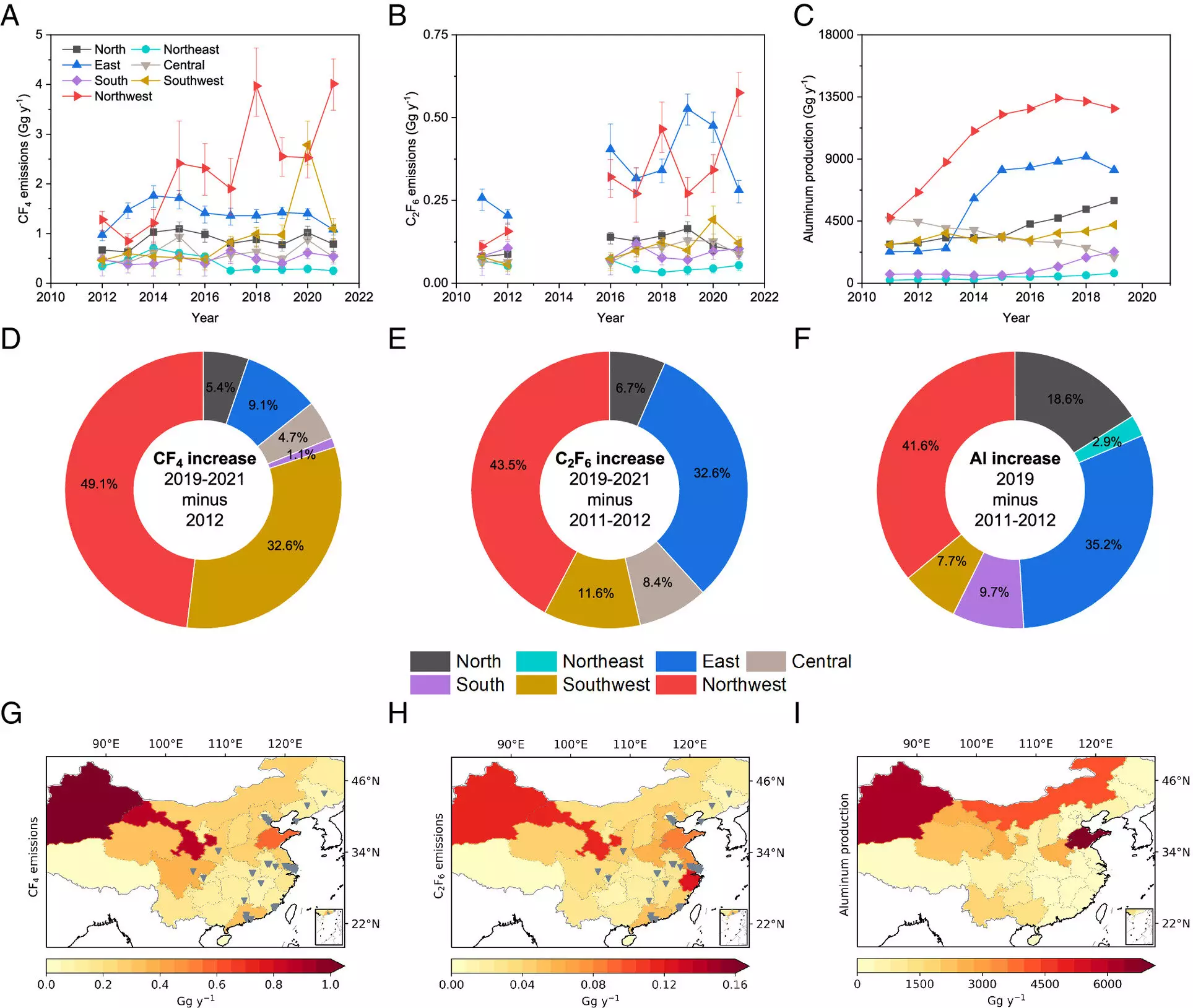In the realm of greenhouse gases, not all are created equal. Each gas has its own global warming potential (GWP), which measures how much infrared thermal radiation the gas would absorb in the atmosphere over a specific period. Methane, for example, has a GWP about 28 times that of carbon dioxide (CO2) when measured over a 100-year timeframe. On the other hand, perfluorocarbons (PFCs) have GWPs that are thousands of times higher than CO2. Furthermore, the lifespans of these gases in the atmosphere vary widely, with methane lasting around 10 years, CO2 over 100 years, and PFCs up to tens of thousands of years.
Recent studies have shed light on the concerning rise in Chinese emissions of three PFCs: tetrafluoromethane (PFC-14), hexafluoroethane (PFC-116), and perfluorocyclobutane (PFC-318) over the last decade (2011 to 2020 or 2021). These emissions play a significant role in driving up global emission levels of these potent greenhouse gases. The studies point to sources of substantial PFC-14 and PFC-116 emissions in the western regions of China, where the aluminum industry thrives. Conversely, the semiconductor industry in the more economically developed eastern regions is a contributor to emissions of these gases as well. The observed increase in emissions of these gases in China by 78% has been a major factor in the global rise.
Another study highlights a 70% increase in Chinese emissions of PFC-318 during the period of 2011-2020, with eastern China accounting for more than half of the global emissions increase of this particular gas. Geographically, regions with high PFC-318 emissions in China coincide with areas densely populated with factories producing polytetrafluoroethylene (PTFE), commonly used in nonstick cookware coatings. The emissions of PFC-318 from these factories are largely byproducts of the manufacturing process.
Minde An, a postdoc at the MIT Center for Global Change Science (CGCS), emphasizes the importance of pinpointing the sources of PFC emissions and developing targeted mitigation strategies. Ronald Prinn, an MIT professor of atmospheric sciences, underscores the significance of phasing out PFC emissions as early as possible to align with global climate mitigation goals. This could be achieved through recycling programs and technological advancements in industries responsible for PFC emissions.
Both studies draw from atmospheric observations collected from a Chinese network of monitoring stations, including those within the Advanced Global Atmospheric Gases Experiment (AGAGE) network. The findings underscore the urgency of addressing rising emissions of potent greenhouse gases like PFCs, particularly in regions where industrial activities contribute significantly to emissions. As the world strives to limit global temperature rise in line with the Paris Agreement goals, curtailing emissions of PFCs will be crucial in mitigating climate change impacts.
China’s escalating emissions of PFCs pose a grave challenge to global climate efforts. Urgent action is needed to identify and reduce the sources of these emissions, ultimately steering towards a more sustainable and environmentally conscious future.


Leave a Reply